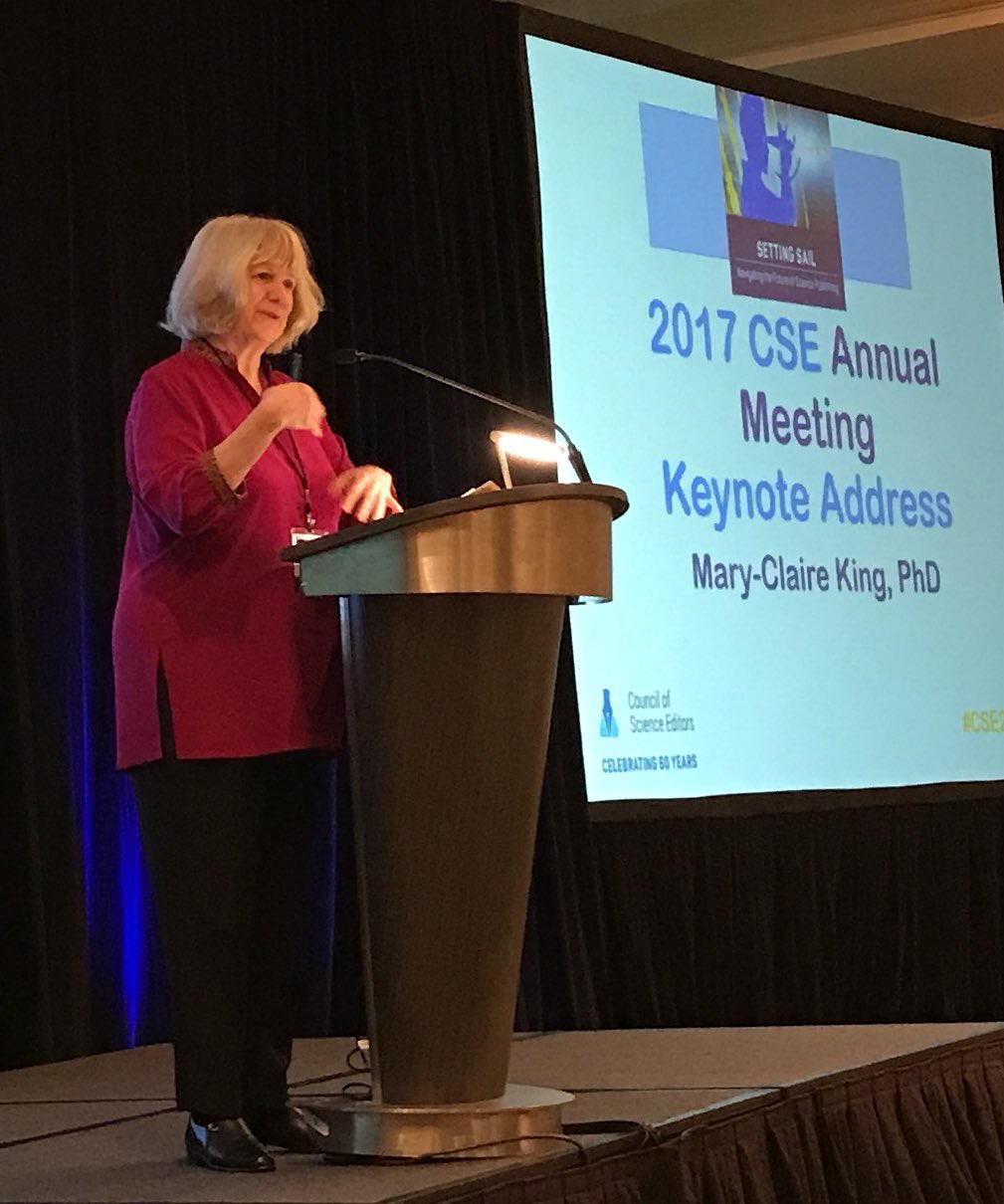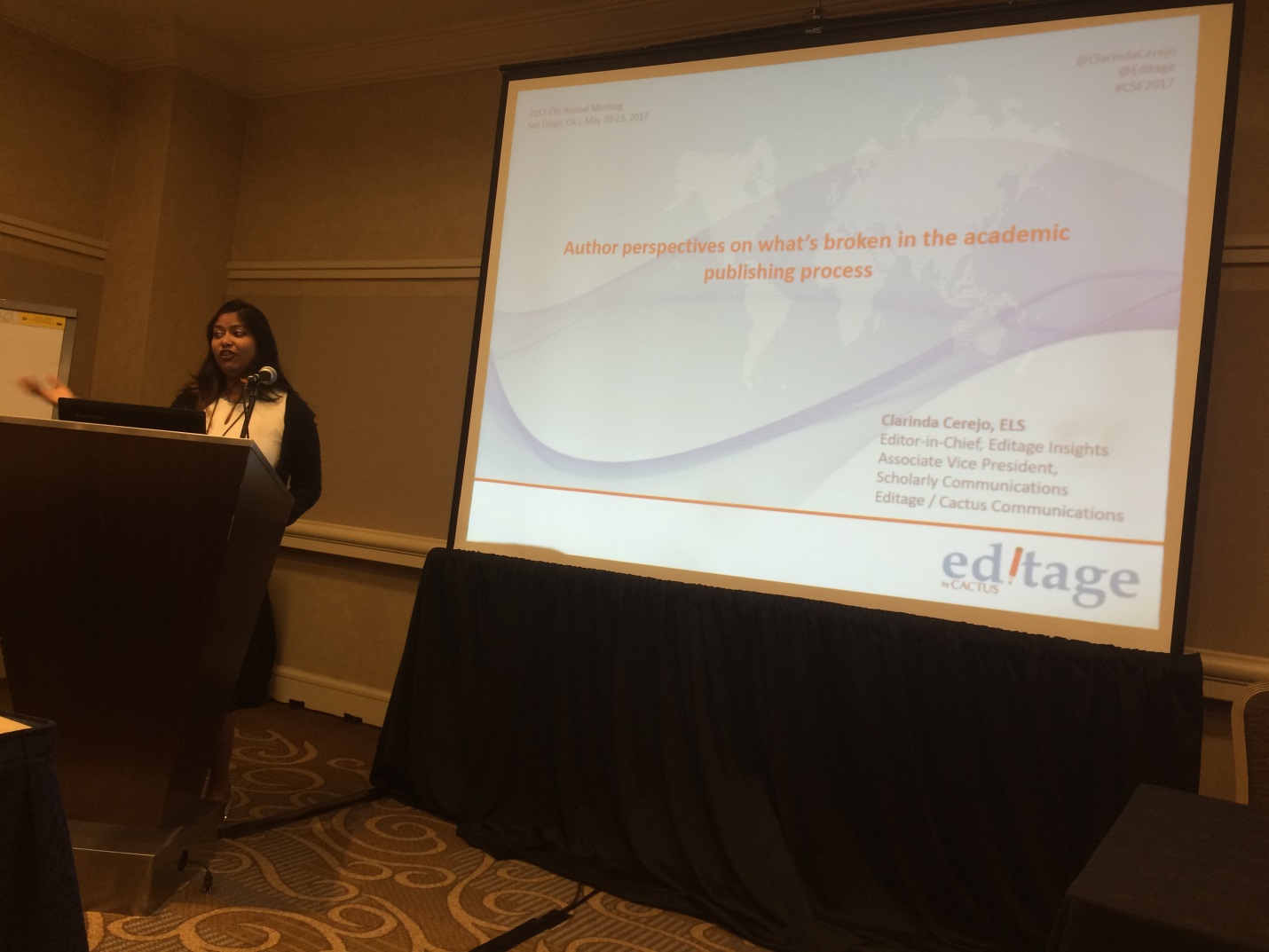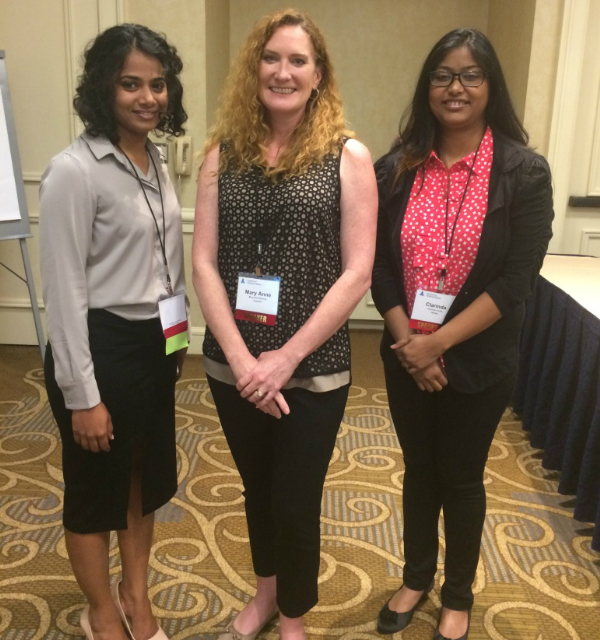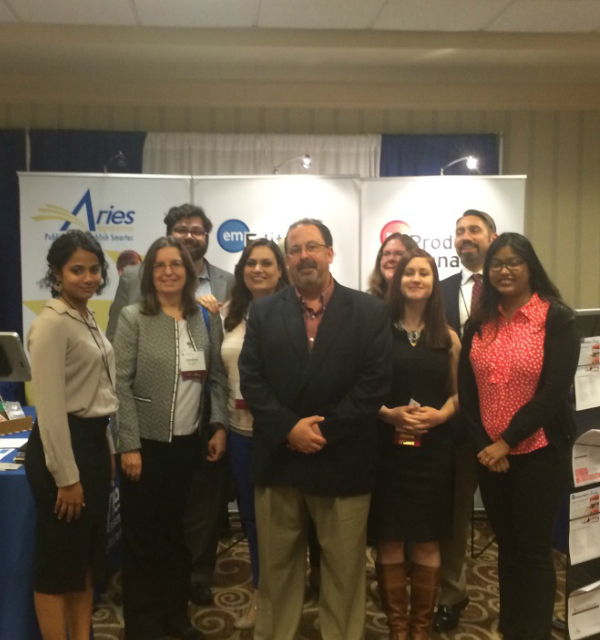Christine Miranda, Managing Editor, Author Services, Editage, shares her first experience attending an academic conference with Clarinda Cerejo, Editor-in-Chief, Editage Insights - the 2017 Annual Meeting of the Council of Science Editors in San Diego, USA.
Earlier in May, Christine Miranda, Senior Managing Editor, Author Services, Editage, attended the 2017 Annual meeting of the Council of Science Editors in San Diego, USA, accompanied by Clarinda Cerejo, Editor-in-Chief, Editage Insights. This is Christine's personal account of the three-day event.
I attended the 2017 Annual Meeting of the Council of Science Editors (CSE) in San Diego, USA, from May 21 to May 23, 2017, along with Clarinda Cerejo, Editor-in-Chief, Editage Insights. This year’s meeting was special for two reasons: it marked the 60th anniversary of the Council and this was my first academic conference! In attendance were professionals working with journals in various capacities, some representing publishers, and a few of us who work with author services companies. The theme was “Setting Sail: Navigating the Future of Science Publishing.” The three-day program promised to be informative, and I was excited to get a closer know more about how the journal industry worked, the challenges it faced, and the changes it was veering towards in the coming years.
The CSE annual meeting was a great place to meet people in science publishing to share ideas with them, and understand their perspectives. The organizers of the meeting encouraged and facilitated networking sessions throughout, and the first one for me was the New Member/First Time Attendee Reception on Day 1. I was pleasantly surprised to walk into a hall that didn’t have a presenter with slides but rather, little groups of people getting to know each other. I met industry professionals who worked with journals and publishers, and it was interesting to understand the challenges they faced and offer insights on author behavior and challenges. [Pro conference tip: When you can (and without being awkward about it), be sure to read the tags on the people you’re talking to. They’re a great way to quickly understand what the person does and in what capacity he or she is at the conference. For instance, you’d probably avoid asking President-Elect (and now President) Sarah Tegen if she was attending the CSE meeting for the first time if only you’d looked at her tag. It happens!] The Reception was followed by a Welcome Dinner, another opportunity to network and have a look at the posters on display and the exhibitor stalls.
The keynote address entitled “Perhaps in My Next Life…” on Day 2 was my favorite session of the meeting (though there were a couple of close seconds). Dr. Mary-Claire King, with a claim to fame of identifying breast cancer genes and demonstrating that humans and chimpanzees share about 99% of their genetic material, delivered a very engaging talk and made some important points as a representative of authors at the meeting. Journal editors, she noted, play a key role in determining the direction science takes. It’s an important role to play, and one that must be fulfilled with great responsibility. She proceeded to list some of the things she, as an author, would like journals to know.
- Journals seem to add to their guidelines very regularly. But the lack of pruning these results not only in a very long list of things for the author to consider, but also some internal inconsistencies that confuse the author and likely extend processing time.
- Another pet peeve is the time for second review. She finds it unacceptable that she has to wait six weeks once she’s responded to the journal reviewers’ notes. Can journal editors take a call if their reviewers take more than two weeks to get back?
- Finally, she’s a big fan of responsive editorial staff. All things being equal, Dr. King will choose a journal based on the responsiveness of its editorial staff.
She also spoke of how theme issues by journals provide valuable topic- and country-based insights. She was excited to once be asked to write a memoir about a specific experience, and she encouraged journals to do more of this. Interestingly, Dr. King touched upon the importance of good writing, which is not limited to grammar and language, but must ensure coherence and flow.
[Photograph below: Dr. King delivering the keynote speech.]

Next, Clarinda Cerejo, Editor-in-Chief, Editage Insights, shared the stage with Bryan Hammon, Freelance, Research Affairs, Faculty of Medicine, Khon Kaen University, Thailand, and Julie Nash, Senior Partner, J&J Editorial, LLC, to talk about the “Pain Points for International Authors.” Clarinda shared interim results of an ongoing global survey conducted by Editage Insights, which included responses from more than 5000 authors. The empathy toward authors among the audience was palpable when Clarinda shared results on the differences in authors’ and journals’ perspectives. Interestingly, the survey results touched upon points raised at other discussions at the annual meeting as well, including how authors feel about editorial staff responsiveness, time to publication, and author instructions, among others.
[Photograph below: Clarinda Cerejo, sharing interim results of an ongoing author survey conducted by Editage.]

Bryan Hammon made some key observations about how the East differs from the West in terms of understanding publication. Most of the differences stem from a difference in culture. The discussion after the session threw up some interesting questions on what the West can learn from the East, something that will probably unfold in the years to come. Julie Nash spoke about her experience in Singapore and China, where the ISMTE meetings were organized.
“The ST in STM” session dwelt on some of the challenges that the non-biomedical journals face. Among them, funding was an important one, and each speaker talked about ways in which to overcome this challenge. It was interesting to note how cultures can differ across different groups of professionals, and tweaking systems accordingly was important, as it is in any other business. Similarly, there were informative sessions on operational challenges common across industries, such as managing remote workforces and helping employees through change.
Day 2 ended with Dinner Conversations, an interesting concept, where groups of people from the conference went out to dinner together. Not only did this help us understand more of what each person did in their professional lives, but it was a great opportunity to get to know people personally as well. Ours was complete with a crash course in Baseball and American Football!
Day 3 began with a Plenary Session on “Survival of the Fittest: Evolution as Applied to the Future of Scientific Publishing.” Marcia McNutt, National Academy of Science, spoke about science publishing using the analogy of a robust ecosystem. Robustness is essential for any institution that must survive the test of time. Key aspects of a robust ecosystem are structure, redundancy, and integrity, she noted. Take one link out of a food web, and the entire ecosystem could collapse - structure is important. A certain degree of redundancy ensures continuity. For example, it is fine if there is a redundancy in journal publishing and authors have to choose between one or more similar journals from their area of study. And finally, journals and authors need to work together against predatory journals and ensuring that credit goes where credit is due.
The next session was among my favorites at the conference. The speakers at the “Editorial and Publishing Questions – Data Informed Solutions” session touched upon a wide variety of topics. These included at what stage journals should ask for the finest of details to be included in manuscripts so as to minimize processing time, how the peer review process can be made more effective through training, how cross-reviewing influences reviewer satisfaction and editor decision making, and whether manuscripts and reviews should be transferred between journals of a particular organization, among others. Most of the topics discussed were author-facing, and as someone who works with an author services company, it was heartening to see that journals are becoming increasingly aware about author challenges and are making efforts to minimize them. I felt more assured that the authors my teams help while executing their duties as editors would be dealing with journals that are trying to understand authors’ needs.
We also had the chance to catch up with some of our partners at the meeting – Mary Anne Baynes of Overleaf, the guys at Aries Systems, and Adam Nicely of Wolters Kluwer.
[Photograph below, left to right: Christine Miranda, Mary Anne Baynes, and Clarinda Cerejo]

[Photograph below: Representatives from Editage partner Editorial Manager flanked by Christine Miranda (far left) and Clarinda Cerejo (far right)]

The three-day CSE 2017 conference was an enriching experience. And the fact that it was held in one of the nicest cities in the US certainly added a cruising touch to the experience. Watching dolphins and sea lions, touring the Gaslamp district area on a Segway, and great food were added bonuses to what was already a very fulfilling experience!
